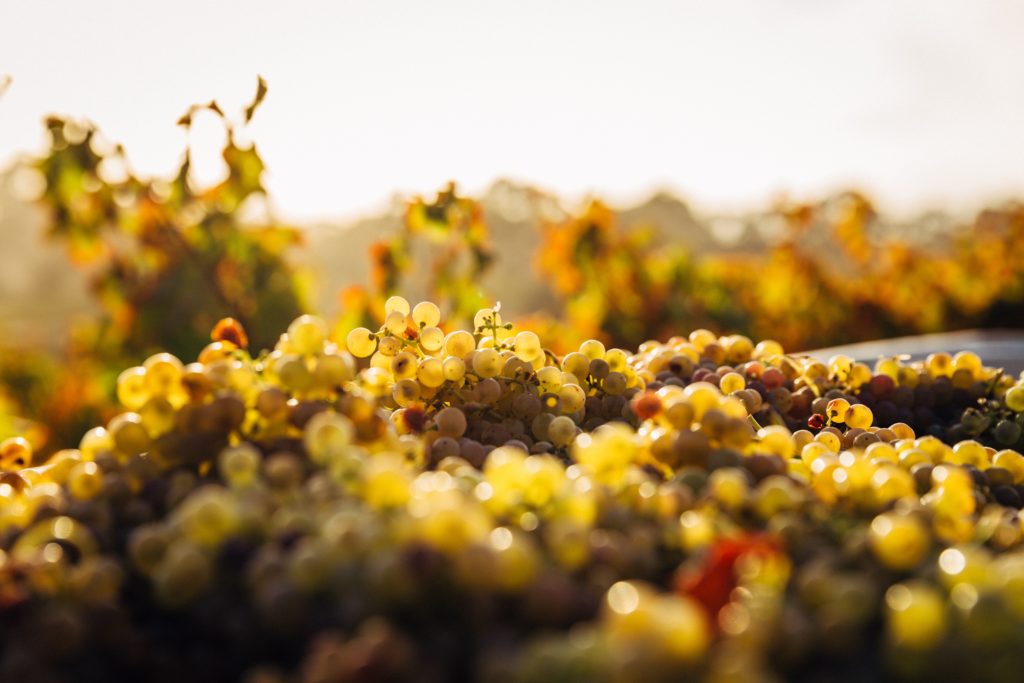How White Wine Is Made
Episode #8 of the course Introduction to red and white wine by Paul Kalemkiarian
With your knowledge of the most popular white wines, let’s look at how those wines are made.
White wine should be easier to make than red. In very simple terms, grapes are picked, crushed, and pressed, then the juice is allowed to ferment until sufficient sugar has turned into alcohol.
The first step, picking the grapes, is often carried out by mechanical harvesters, which shake them from the vines. They may be sorted, with the rotten ones being removed. The rest are taken quickly back to the winery. The longer the journey, the greater the risk of oxidation by heat and air. For this reason, many winemakers take the added precaution of harvesting their grapes at night.
For heavier-bodied wines, grapes may be crushed and allowed to macerate for 24 hours in a cool tank. This “skin contact”—wherein the grape skins are left in the vat, imparting their flavors, for a certain amount of time—is particularly popular in California. For crisp, fruity wines, grapes are lightly crushed, and the solid matter passed straight into the press. Winemakers may control the temperature, keeping it cool.
The more you press, the more bitter the result. Some pressed juice is generally added to the “free run” juice drawn off from the crusher, and the mixture is then passed into glass-lined, stainless steel vats. Sulfur is added to the vats to kill off bacteria and prevent oxidation.
Once in the vat, suspended matter will drop out of the juice, which can then be allowed to ferment in the vat or in wooden barrels. Modern wineries may use vacuum pumps or centrifuges to separate solids from the liquid.
Fermentation may be fast or slow, warm or cool. “Warm” means 18-25°C or 64-77°F; “cool” is 8-15°C or 46-59°F. The cooler the fermentation, the fruitier—but possibly less complex—the wine. Barrel fermentation—particularly in small, new oak barrels, as in Burgundy—will give the wine an oaky vanilla character and some longevity-bearing tannin. This is only appropriate for certain grapes, notably Chardonnay, which gains from being matured in small new oak barrels. White Dão, on the other hand, tends to remain for a long time in large, old barrels.
If there’s enough sugar to make sufficient alcohol and leave some left over to sweeten the wine, the fermenting yeasts are simply killed off by refrigerating the vat or by adding more sulfur. Otherwise, one can “back blend” by adding sweet grape juice to the fermented wine, as they do in Germany. Or local laws permitting, you can add a little cane sugar to help the process. (Adding sugar is called “chaptalization.”)
Extra yeast may be added to speed up the fermentation process. If there’s too little acidity, tartaric or citric acid can correct the balance; if there’s too much acidity, chalk will remove it. These measures are either allowed or forbidden by local laws, depending on the winemaking regulations governing the area. What is or is not added can be further refined based on organic winemaking principles and the like.
The next stage is malolactic fermentation: the conversion of malic acid (as found in apples) into the softer lactic acid (as found in milk). Allow the malolactic fermentation to take its course—as in white Burgundy—and you get softer wine. Halt its progress with sulfur—as in Vinho Verde—and you get wines with a characteristic Bramley apple bite.
The wine is then fined, typically with bentonite, a powdery clay that drags solid matter, or “lees,” to the bottom of the vat or barrel. After that, the wine is “racked”—passed into another vat—before being filtered and bottled months (or in some cases, years) after the harvest. Some wines, notably Muscadet, are left “sur lie”—on their lees—and so taste slightly yeasty.
White wine is often “cold stabilized,” or chilled so its tartaric acid forms crystals, which can be filtered out rather than be allowed to form in the bottle. Sulfur is also added before bottling to protect the wine. The dose must be carefully judged, however, as too much sulfur will produce a wine with a “bad egg” or “sulfuric acid” smell, which will tickle the back of the throat.
Making wine is a delicate process that winemakers can spend a lifetime refining. Next time, we’ll look at white wine in the glass and see what we can determine from its appearance.
Recommended book
The World Atlas of Wine by Hugh Johnson, and Jancis Robinson
Share with friends

